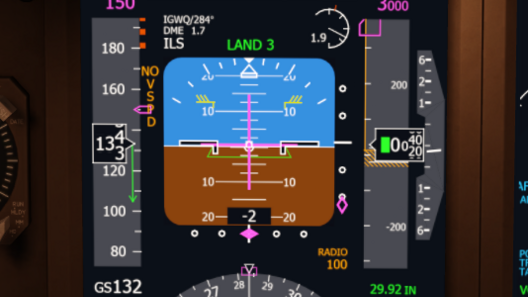Keep in mind that there are also different systems and software versions installed in real world aircraft. Just because you see it in one video does not mean it doesn't exist in a different aircraft.
Jet-Pack (IPACS) This sentence pointed out something to me. Perhaps it's not about different system versions between aircraft but rather about the nature of input parameters. Here, I should apologize for my earlier assumptions. The aircraft systems are operating normally, but the set parameters are not.😂
After consulting the PMDG forum, I discovered that this minor error had already been fixed in the PMDG737 for MSFS2020. Maybe I should shift my focus to their upcoming PMDG777 for Microsoft Flight Simulator instead of the outdated P3Dv5.
According to clues provided on the PMDG forum, the appearance of the 'NO V SPD' prompt after landing is achieved through a timer. Their developers emphasized that modifying data should come from documents provided by the manufacturer rather than videos. However, I still couldn't find this clue in publicly available materials.
Because I was overly convinced that this error was happening at all times, I overlooked some other potential possibilities.
You previously mentioned, 'Could also be a different logic depending if you perform a full flight or if you started the flight on (short/long) final approach.' I reflected on this statement, and in the just-completed full flight, the correct result appeared. 'NO V SPD' did not appear prematurely. Although this wasn't my first time conducting a full route flight, it was something I had overlooked in previous tests—being too certain about the incorrect fact to notice the correct scenario.
After a series of comparisons, I found the true cause of this issue:
- When using the game's preset long final approach, VREF in the CDU was already inputted. However, 'NO V SPD' appeared immediately after touchdown.

2. When I manually input the APP REF page, I manually entered VREF, and everything simulated correctly after landing.

So, the only difference is: the data input by the game is a smaller number, while the data I input is a larger number. Therefore, the conclusion is clear: the smaller number is not the actual input, or it merely displays a number on the PFD without providing the Fly-By-Wire with the actual V-speed. Thus, discrepancies occur after landing with the smaller number, while manually inputting the number presents no issues.


Perhaps the next step is to figure out how to transform the smaller number into the larger number without modifying any aircraft system logic. That's it. Once again, I apologize for my earlier assumptions!
![]()
